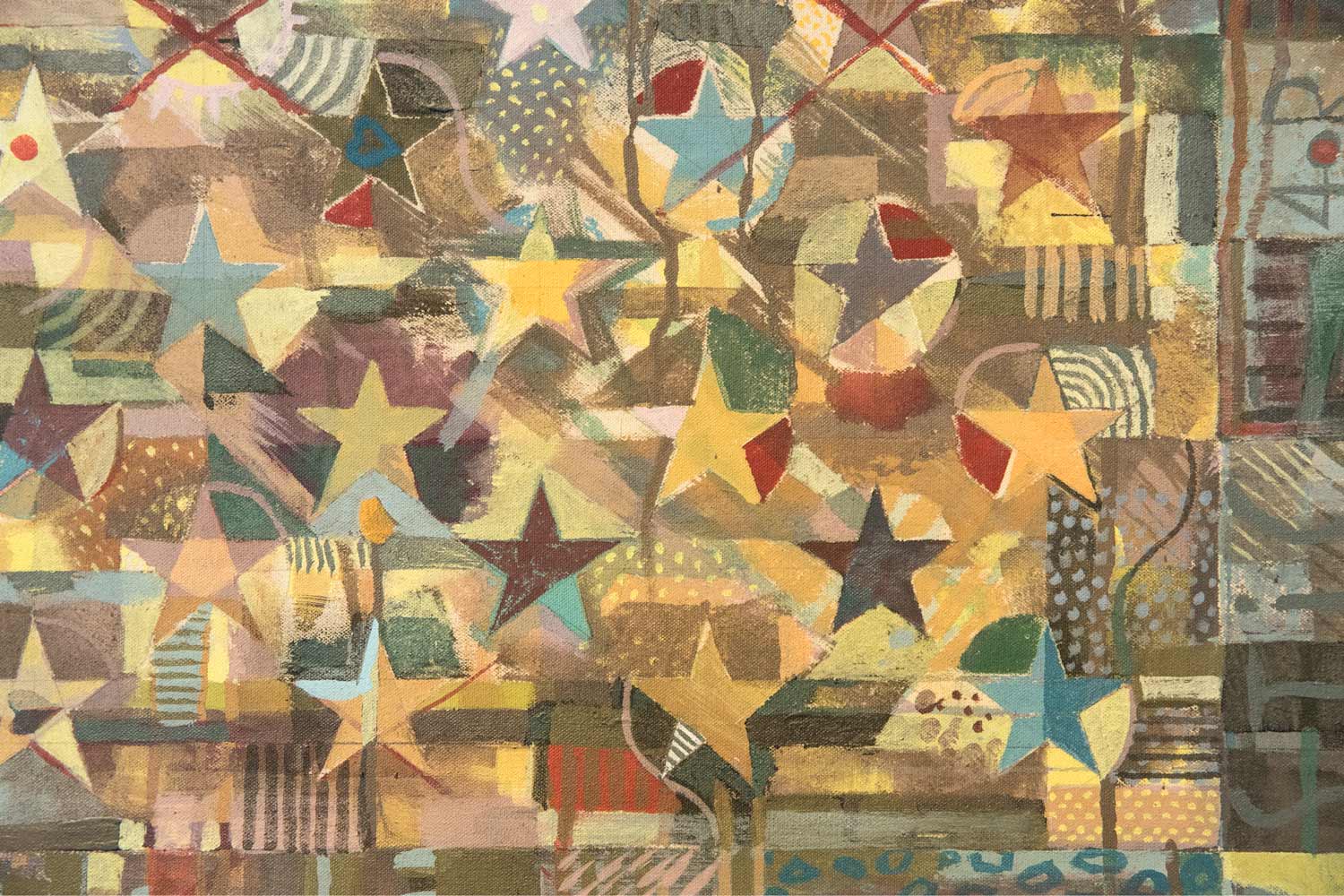University of Virginia art and architecture professor Sanda Iliescu still keeps the small American flag that her mother waved when welcoming President Richard Nixon to Romania in 1969.
It was the first time an American president had visited the Communist country, and for Iliescu’s mother – a Romanian dissident – Nixon’s visit was a powerful reminder of the freedom she dreamed of. A few years later, Sanda Iliescu, then 17, and her family fled Romania to chase their own version of the American dream in the United States.
Now, more than 40 years later, that same small American flag sits on a table in Campbell Hall, carefully protected in a Ziploc bag as Iliescu and her students work on creating their own larger version.
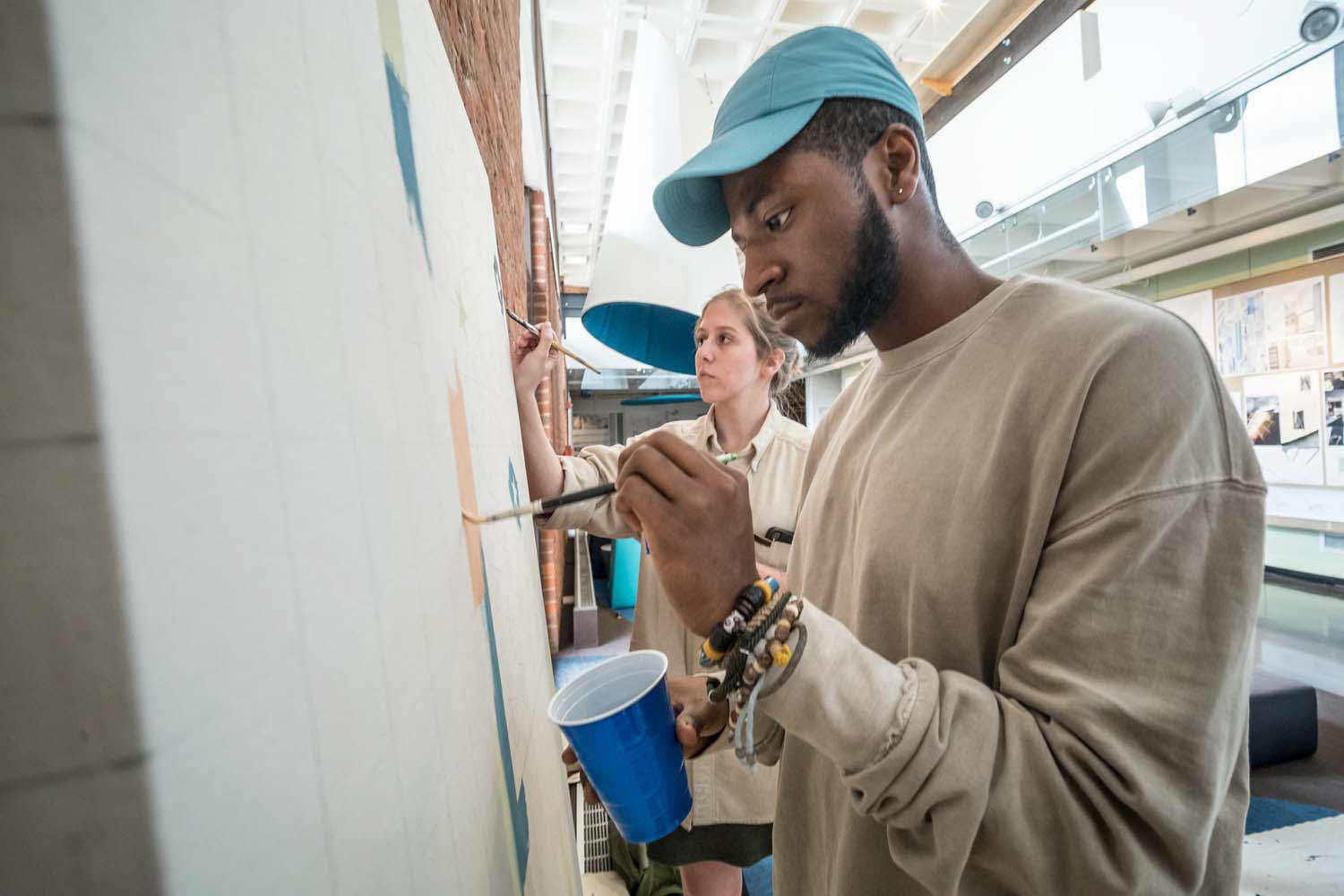
Students, faculty members and community members worked on the flag painting over the course of 10 days in Campbell Hall. (Photo by Sanjay Suchak, University Communications)
Each year, her “Painting and Public Art” course hosts a public art project as part of their final exam. This year, the class wanted members of the public to come together to paint a new interpretation of a shared icon: the American flag.
“Because of so many national political events, and because of the tragic events here in Charlottesville, we thought this might be a good time to meditate or think about what the United States means and what our country means to us,” Iliescu said, referring to last summer’s white supremacist demonstrations. “That is why we chose the American flag.”
For 10 days, they transformed a corner of Campbell Hall into a temporary art studio, brushes and paint at the ready for anyone who wanted to pick them up.
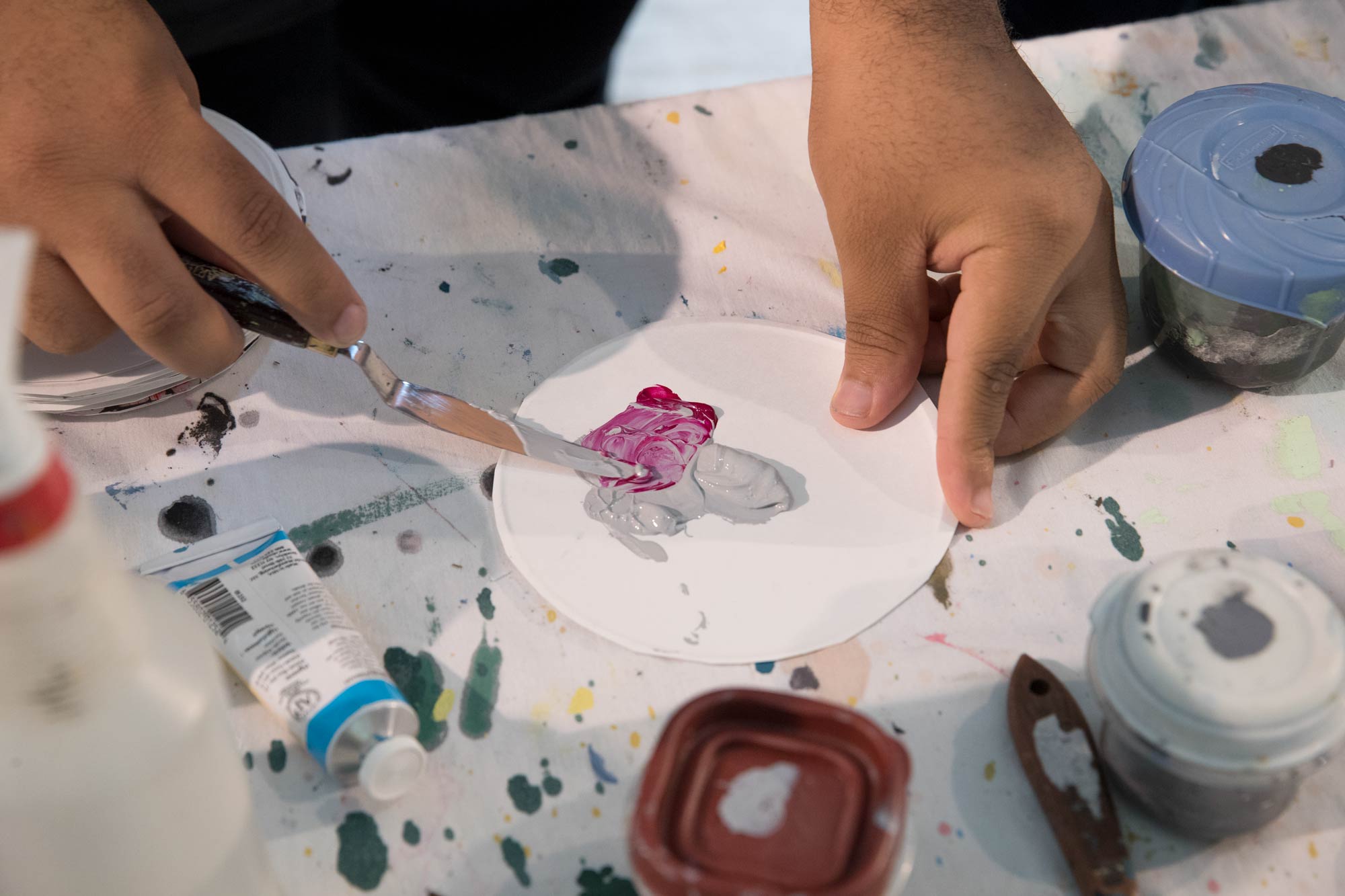
Iliescu and her students encouraged passerby to mix their own colors and participate. (Photo by Dan Addison, University Communications)
The project, called “The American Flag: A Study in Gray,” was originally intended to include mostly gray hues, a neutral color that Iliescu said can reflect a range of emotion. However, the end product was much more colorful.
“That is what is nice about public art. It is out of my hands; I get to let it be what it becomes,” Iliescu said. “I let people choose where and what they want to paint. Some chose to write; some chose to create patterns.”
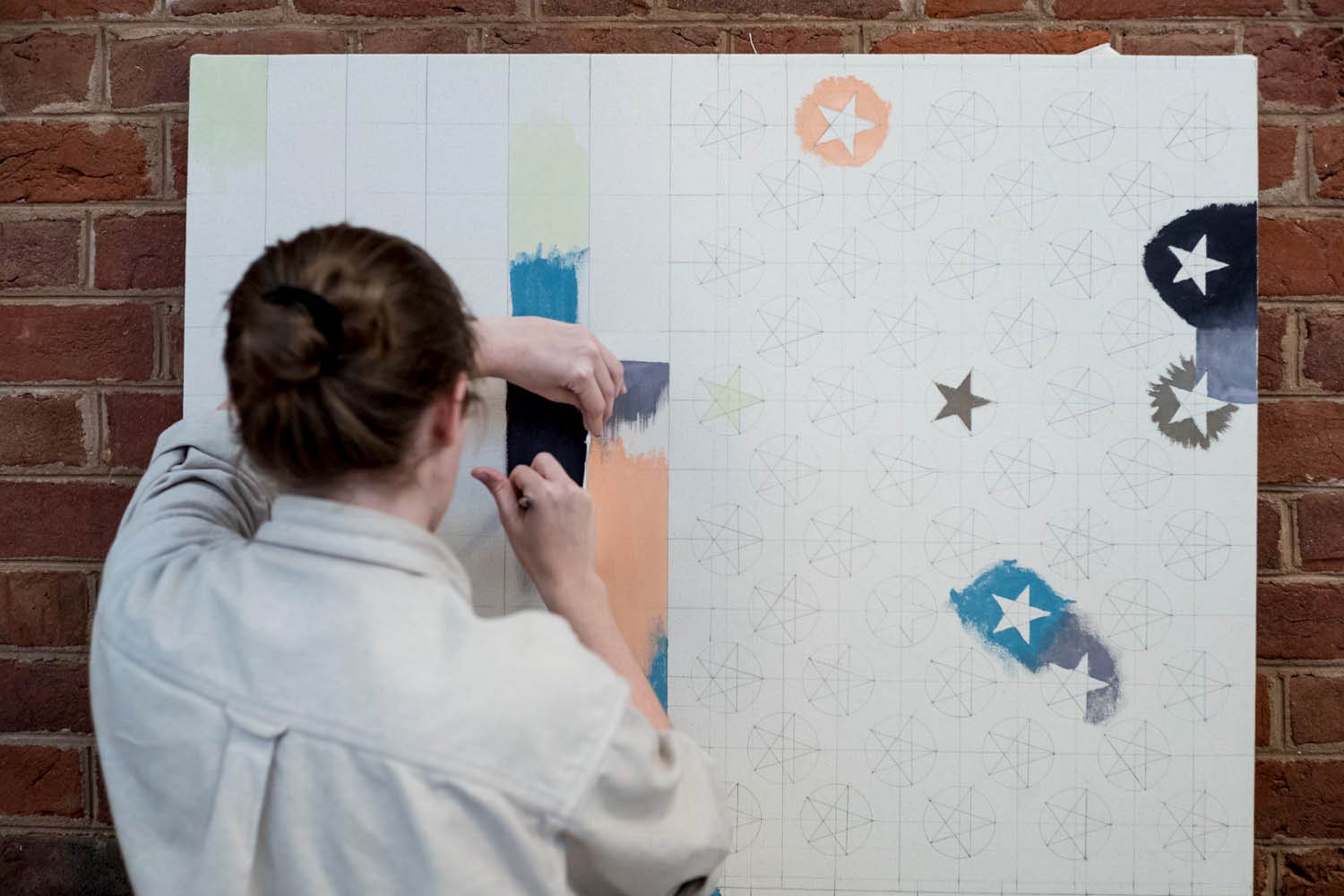
Though Iliescu allowed painters a lot of freedom, she did request that they loosely stick to the stars and stripes pattern drawn by her students. (Photo by Sanjay Suchak, University Communications)
Graduate student Lemara Miftakhova said she appreciated the chance to take a step back and think about what the flag means to her and to others.
“It’s interesting to see the result, to see people’s thoughts and feelings in the painting,” she said. “It explains so much without having to say much.”
Miftakhova, who moved to the United States from Russia a few years ago, also appreciated the feeling of community that came from creating something together.
“I really enjoyed imagining such a big community participating in this one piece, with me as a part of it,” she said.
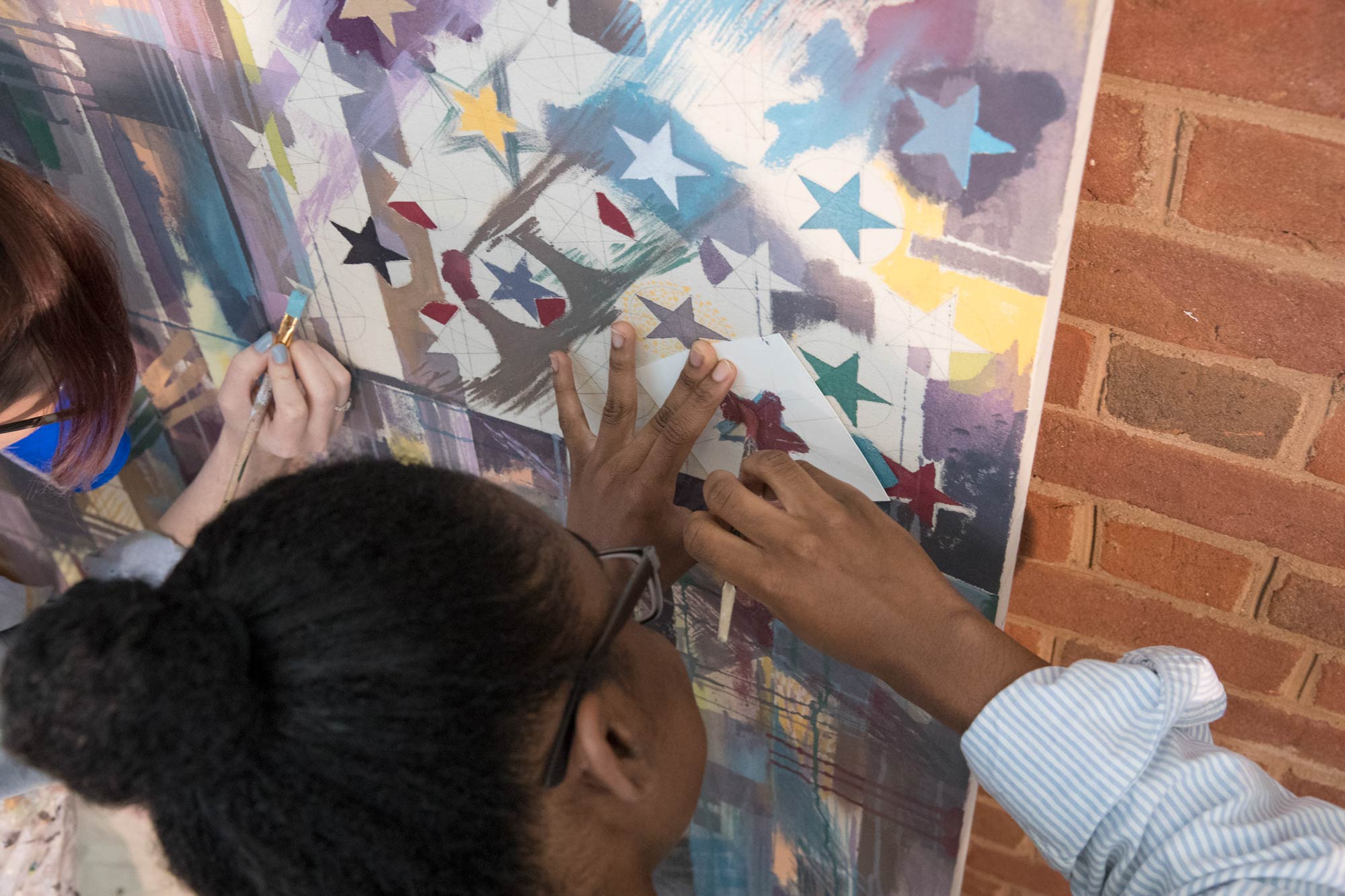
Students incorporated all sorts of patterns and painting techniques, and even a few words and symbols. (Photo by Dan Addison, University Communications)
In addition to painting, Iliescu also asked participants to write a brief response sharing their feelings about the flag.
“I was very curious about what people think about our country,” she said. “I feel like I know the community better, both because of the colors they chose and because of their answers.”
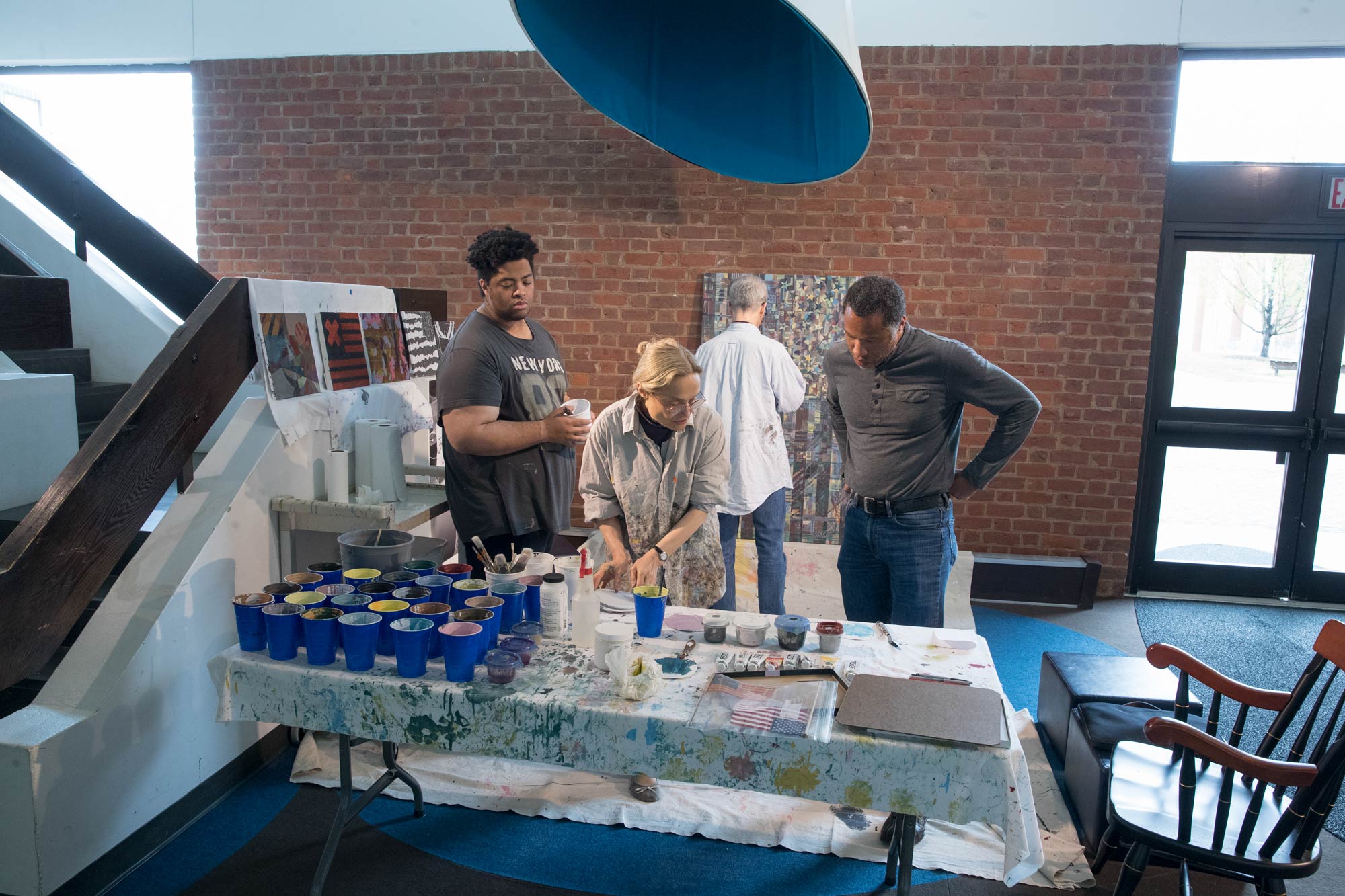
Iliescu kept the flag her mother waved as a Romanian dissident in a Ziploc bag near the paints, a reminder of what the flag means to her family. (Photo by Dan Addison, University Communications)
For Iliescu herself, the flag is a powerful reminder of both the American dream her family cherished and of the obstacles they encountered in their new home. As a new immigrant, Iliescu was both thrilled and disappointed by what she found in America.
“Freedom of the press and freedom to speak your thoughts is amazing in this country, and we are so fortunate to have that,” she said. “On the other hand, I was really shocked by the number of homeless people, the poverty, the extreme difference between the very poor and the very rich, and by the racism.”
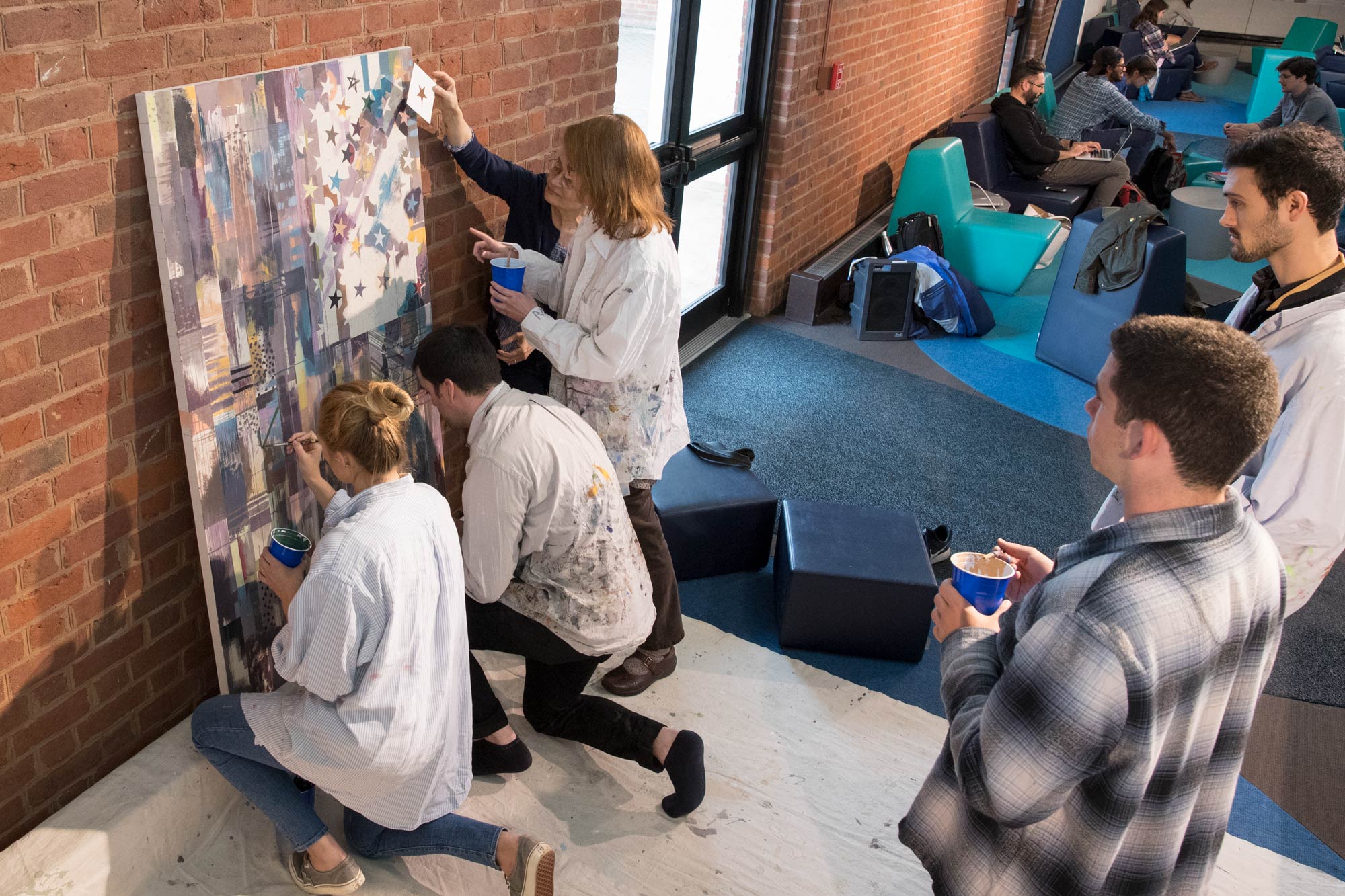
Public reflections on the flag were as richly varied as the painting itself, encompassing both positive and negative emotions. (Photo by Dan Addison, University Communications)
The anonymous public responses reflect a similar range of positive and negative reactions, encompassing emotions like pride and thankfulness alongside serious concerns about social and political problems.
“The American flag reminds me of childhood and July 4th cookouts. It brings to mind memories of watching the Summer Olympics. I think of presidential elections, of politics, even of war,” one person wrote. “But as I have grown older, the identity of the flag has become marred. The flag ultimately represents a nation with a number of flaws. Inequality, racial prejudice, gender discrimination. All of these issues, along with many others, are woven into the stars and stripes.”
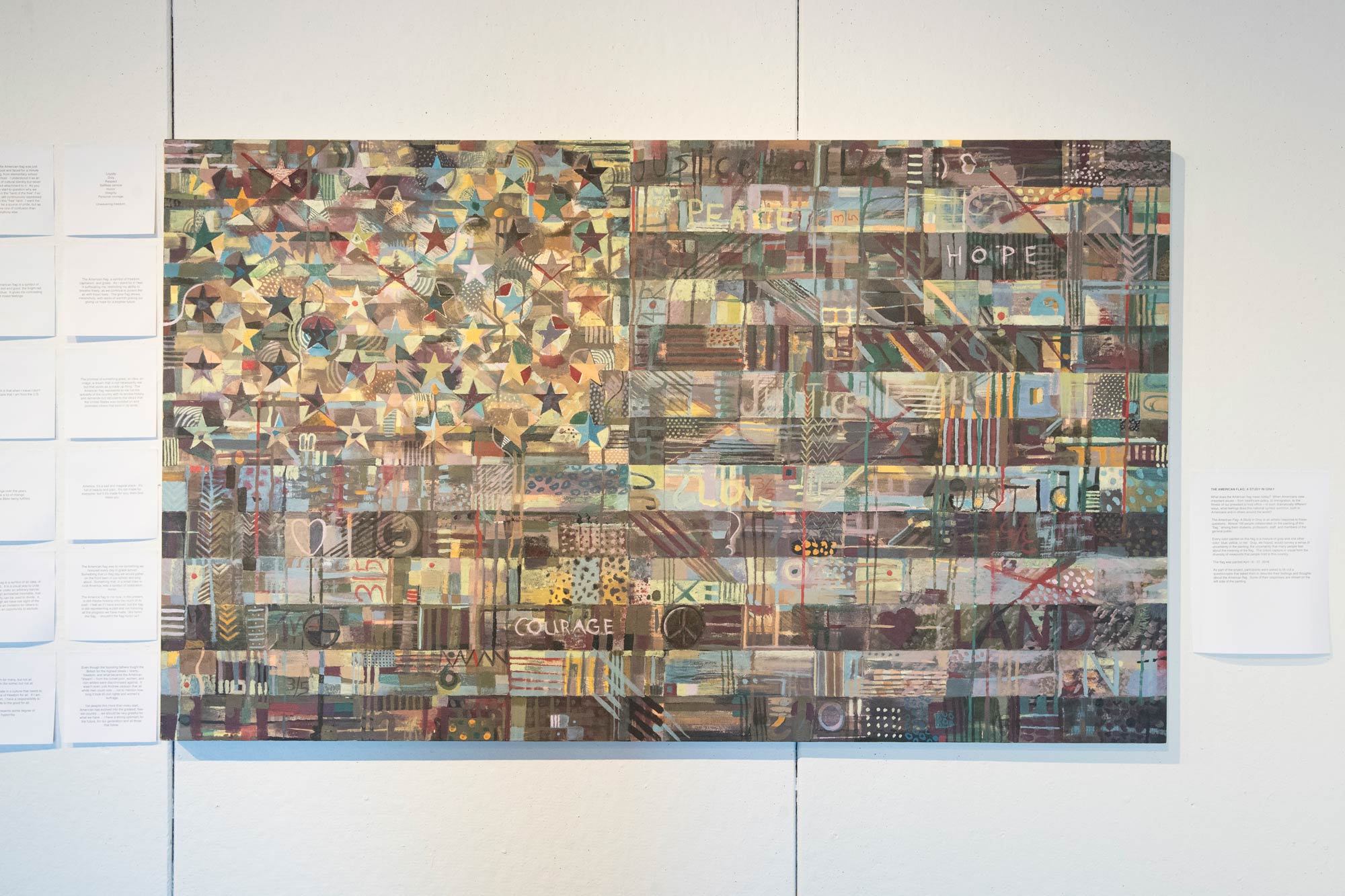
The finished product is on display in Campbell Hall’s Elmaleh Gallery this week. (Photo by Dan Addison, University Communications)
Another respondent wrote: “The American flag reminds me that our dreams are made of steel. The prayer of every man, woman and child is to know how freedom feels. I feel very fortunate and blessed to live in the United States of America.”
Another saw the flag as a reminder of civic duty: “A call to participate in a culture that needs to become a place of freedom for all. If I am here as a citizen, I have a responsibility to contribute to the good for all.”
Media Contact
Article Information
May 1, 2018
/content/public-art-project-explores-what-american-flag-means

